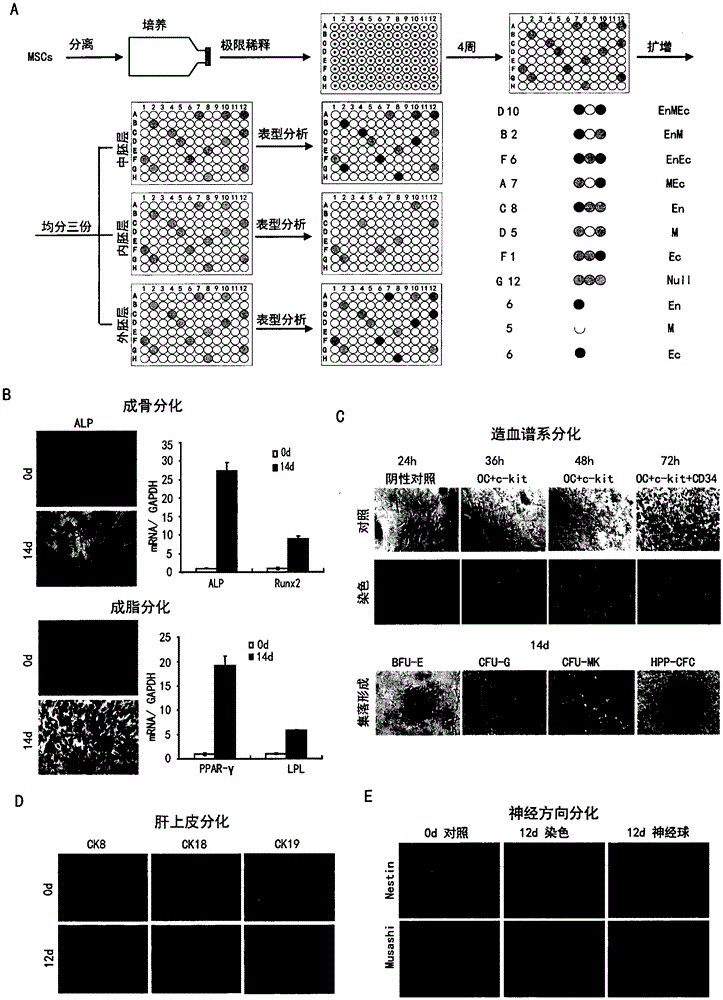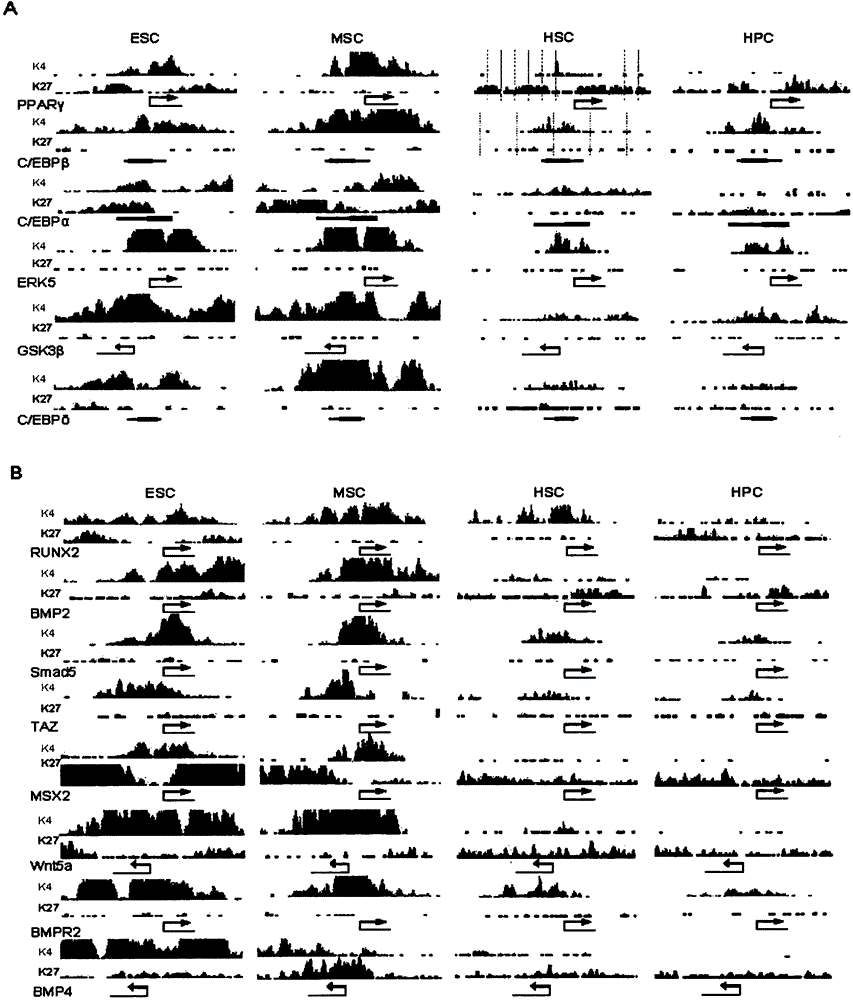Subtotipotent stem cell products and their epigenetic modification tags
A sub-totipotent stem cell and mesenchymal stem cell technology, applied in the field of sub-totipotent stem cell products, can solve the problems of consuming manpower, material resources and long time
- Summary
- Abstract
- Description
- Claims
- Application Information
AI Technical Summary
Problems solved by technology
Method used
Image
Examples
Embodiment 1
[0059] Example 1Flk1 + Verification of MSC acquisition and differentiation ability
[0060] To evaluate Flk1 + For the clinical application value of MSC, we first verified its differentiation ability.
[0061] Adult fat samples were taken from the Plastic Surgery Hospital of the Academy of Medical Sciences, and adult bone marrow samples were taken from the 307 Hospital of the People's Liberation Army. All samples signed an informed consent.
[0062] Isolation of adult adipose-derived mesenchymal stem cells (aMSCs):
[0063] Adult adipose tissue was obtained from patients undergoing liposuction (Plastic Hospital, Chinese Academy of Medical Sciences), and informed consent was signed with donors, all of whom were healthy women aged 25-35. The method of isolating aMSCs from adipose tissue refers to the method of Zuk et al. [20], with some modifications. The brief description is as follows: the adipose tissue collected by liposuction was washed with D-Hanks to remove blood cel...
Embodiment 2
[0073] Example 2 The different modification states of differentiation-related genes histones H3K4me3 and H3K27me3 are closely related to the differentiation potential of stem cells
[0074] Verified Flk1 + After MSCs have the ability to differentiate into multiple germ layer lineages such as hepatic epithelial, neural, hematopoietic, adipogenic, and osteogenic, we further obtained Flk1 by combining ChIP detection technology with bioinformatics analysis (ChIP-seq). + MSC genome-wide histone methylation modification profile.
[0075] ChIP experiments of H3K4me3 (Abcam8580) and H3K27me3 (Upstate07-449) according to EZChIP TM Standard operating method of kit (Millipore)
[0076] The basic process is as follows:
[0077] 1. Chromatin Sample Preparation and Immunoselection
[0078] (1) Cultivate cells, fix with 1% formaldehyde, cross-link protein and DNA, room temperature for 10 minutes,
[0079] (2) Cells were lysed and sonicated (Branson250D sonicator), the chromatin fragments ...
Embodiment 3
[0172] Example 3 Analysis of the modification status of lineage differentiation-related genes histones H3K4me3 and H3K27me3 can be used to predict the differentiation potential of stem cells
[0173] To further verify the correlation between the modification status of differentiation-related genes histones H3K4me3 and H3K27me3 and the differentiation potential of stem cells, we further correlated the adipogenic and osteogenic lineage differentiation of adipose-derived MSCs (aMSCs) and bone marrow-derived MSCs (bMSCs) using ChIP-PCR. The histone modifications of the genes were analyzed and compared with their ability to differentiate into the two lineages mentioned above. The results of histone methylation analysis showed that the osteogenic genes RUNX2, BMP2, Smad5, TAZ, Wnt5a and BMPR2 were active modifications in aMSCs, and MSX2 and BMP4 were bivalent modifications; except for MSX2 in bMSCs, H3K4me3 was predominantly bivalent Modifications, the others are activation modifica...
PUM
 Login to View More
Login to View More Abstract
Description
Claims
Application Information
 Login to View More
Login to View More - R&D
- Intellectual Property
- Life Sciences
- Materials
- Tech Scout
- Unparalleled Data Quality
- Higher Quality Content
- 60% Fewer Hallucinations
Browse by: Latest US Patents, China's latest patents, Technical Efficacy Thesaurus, Application Domain, Technology Topic, Popular Technical Reports.
© 2025 PatSnap. All rights reserved.Legal|Privacy policy|Modern Slavery Act Transparency Statement|Sitemap|About US| Contact US: help@patsnap.com



